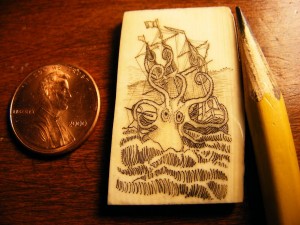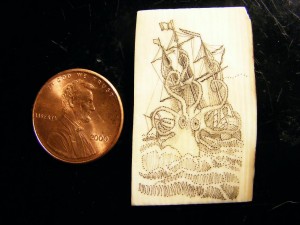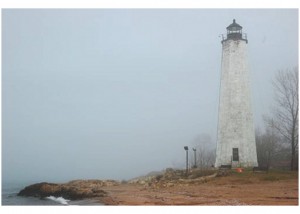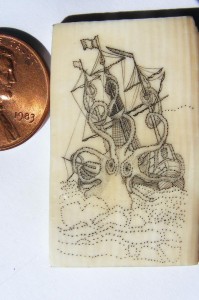After starting a truss rod cover for fun, then realizing I just committed to making a left-handed cover instead of the right handed cover intended, I went back to the Kraken to fill in the waves and darken it down to balance it. At this point it will sit for a week or so to let it kind of gel in my mind. The left hand side needs one line removed, the right hand side needs the mountains “de-stippled”, but beyond that, it’s done – or at least I am done working on this piece. You realize at some point that this is as far as you can go with a piece of scrimshaw, and if you continue on fixing this and “improving” that, you will end up sanding it down and having nothing but ivory dust to show for it. I am close to this point on the Kraken, and have learned a lot at every session. Once complete, it will get a couple of coats of archival wax, then it will either go onto etsy.com or be sold elsewhere.

Digital pictures are a blessing, since I will have copies of the whole process, and will keep them on the site as well. The sun has finally come out, and it’s time to get on to growing things, but there will still be Saturday mornings devoted to nice quiet bug-free work over coffee and ivory.




